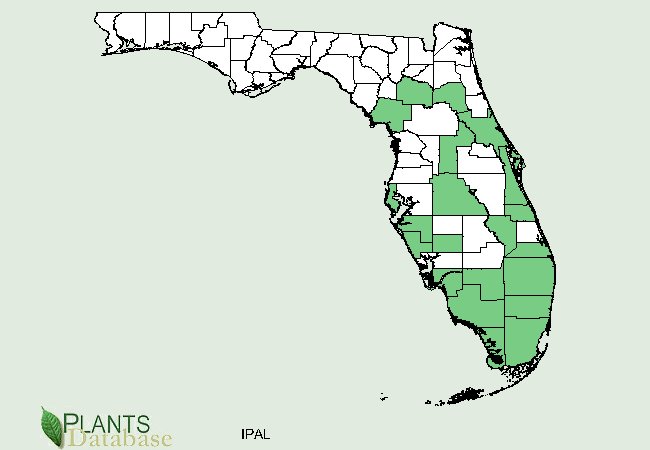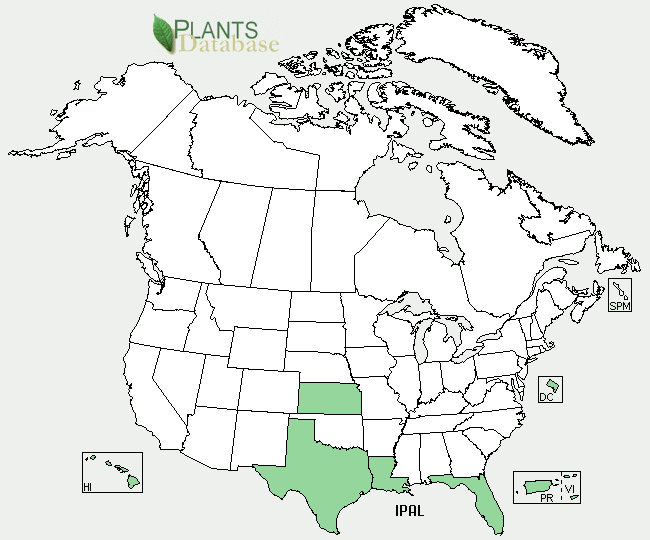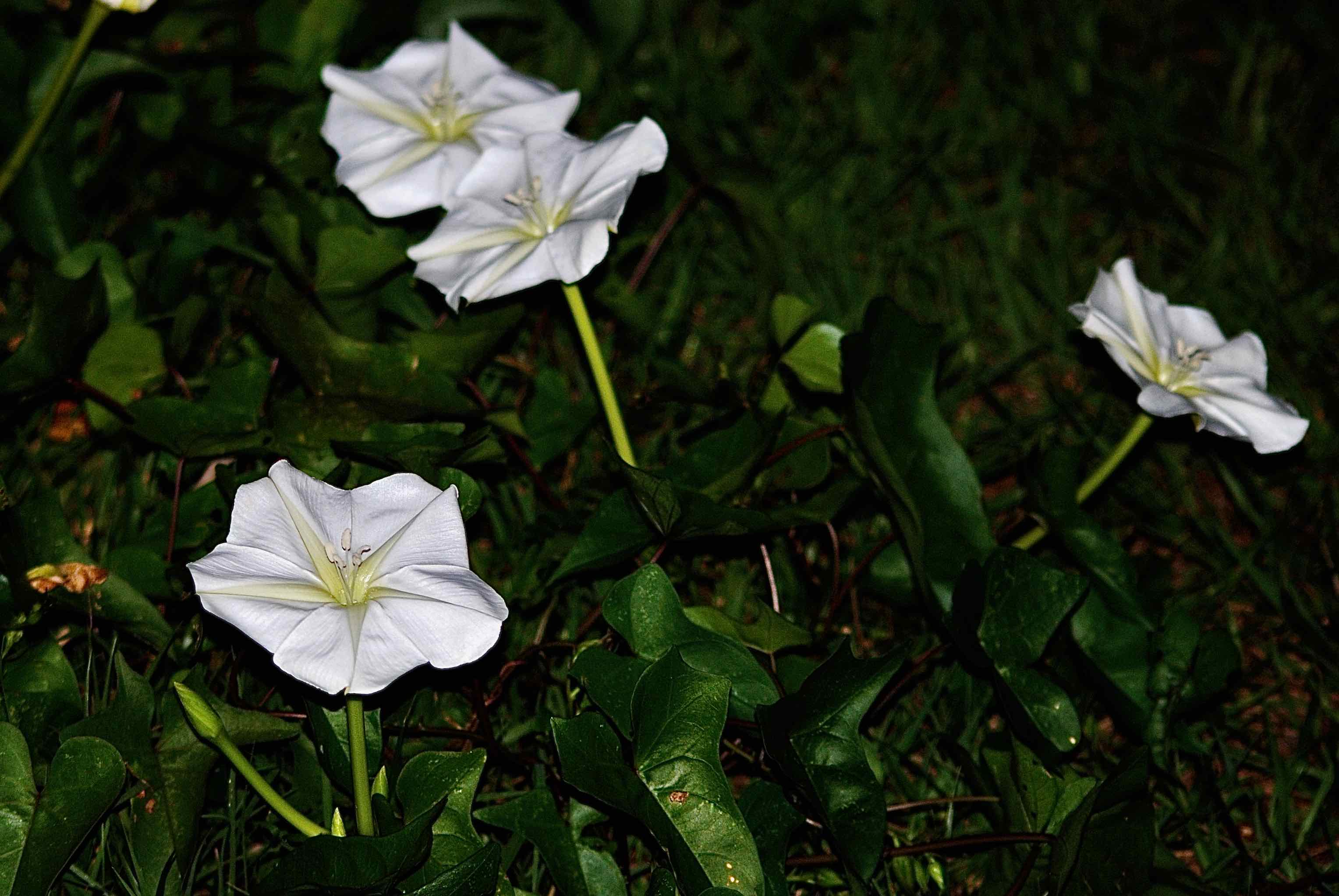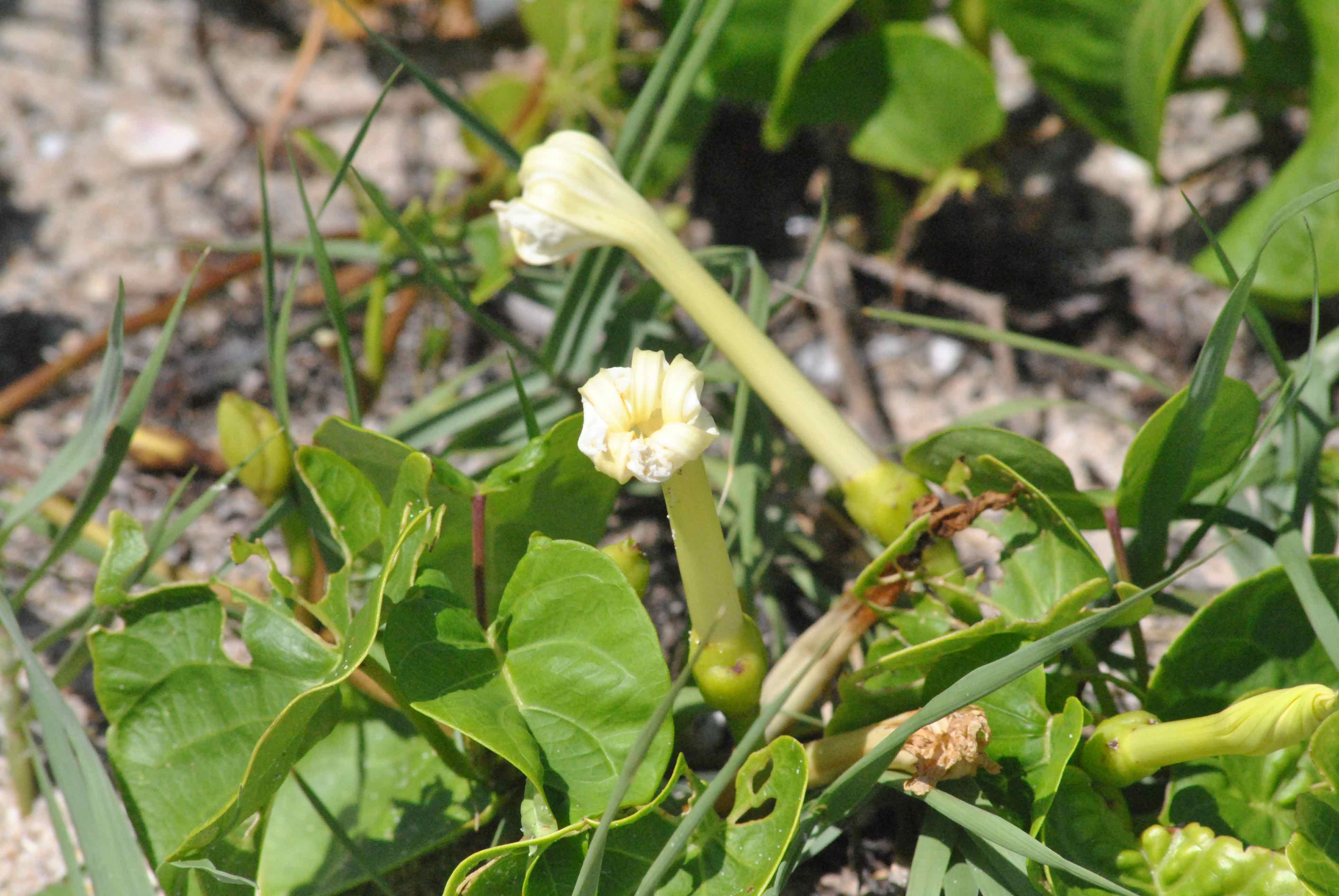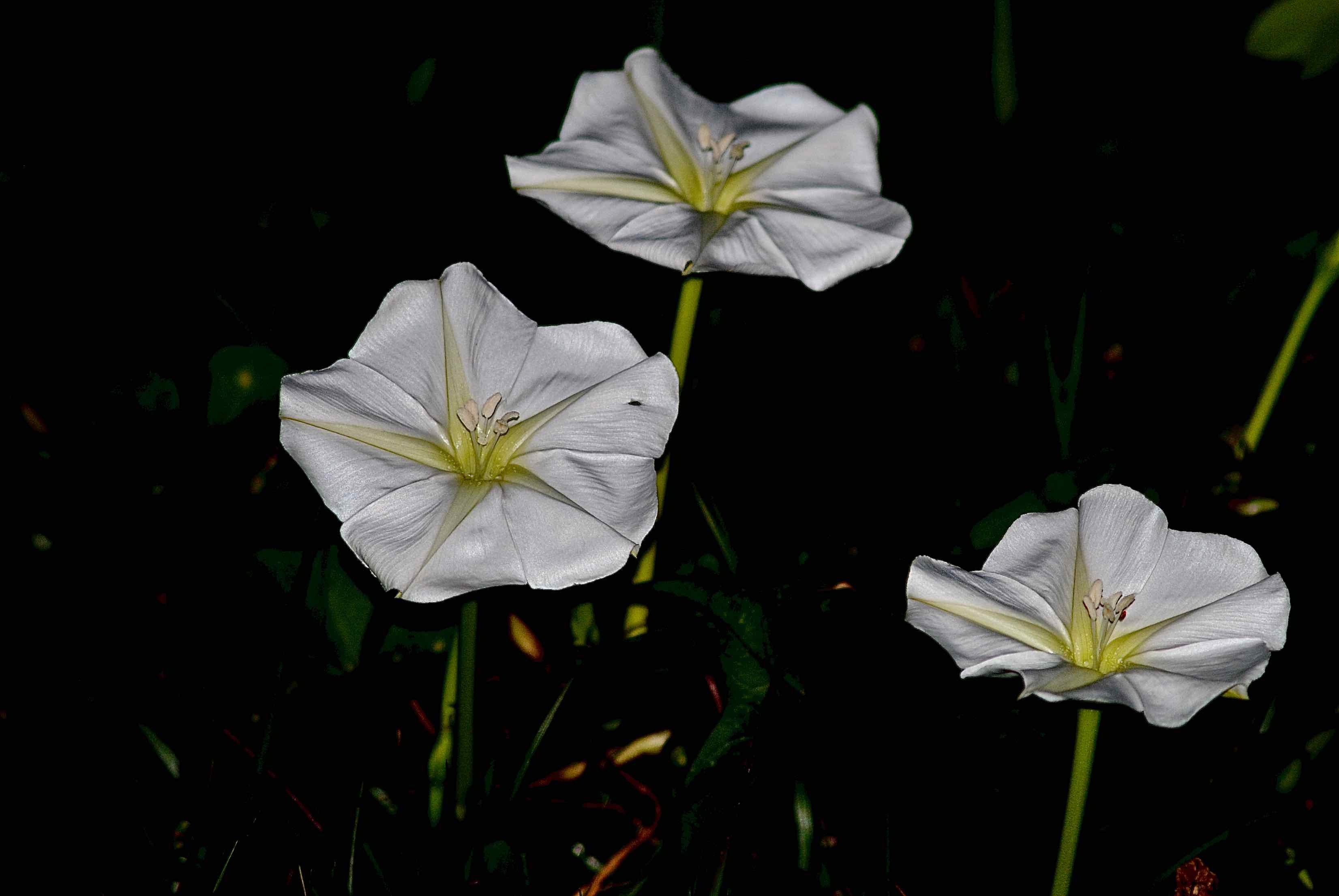
Moonflower, photographed at Loxahatchee National Wildlife Refuge, Boynton Beach, Palm Beach County, in April 2014.
This is one plant that likes the night life. Moonflower, Ipomoea alba, opens its large, white blossoms in the evening hoping to attract a few moths looking to do a little nectaring, then fades away as the sun comes up.
Hence its name. And despite its up-all-night habits, it is a member of the morning glory family. The United States Department of Agriculture, in fact, calls it the tropical white morning-glory.
Which brings up another contradiction: its native range, according to the USDA, includes Kansas and the District of Columbia, two place that are as untropical as you can get. Other states make more sense: Florida, Louisiana and Texas. It's also native to the Caribbean, Mexico, Central America, South America and parts of the Old World, including Africa.
Moonflower typically likes the edges of hammocks and swamps. It likes a lot of sunshine, although it will tolerate light shade. It's a vigorous grower; its vines can extend 15 feet or more (some references say it can hit 40 feet), and form dense mats. It likes moist but not soggy soils, but can tolerate some drought. Because of its rapid growth and thick foliage, it is often used on arbors and fences as a screen.
In South Florida, it is a perennial; in colder places where it is cultivated, it is an annual. And despite it's beauty, moonflower has been deemed a prohibited noxious weed in Arizona and a noxious weed in Arkansas. (Both states tend to take a dim view of all morning glories.) It is an introduced plant in Hawaii.
Moonflower blooms are large, about five or six inches across, with a star pattern in the center that is typical of morning glories. The leaves are large and heart-shaped. The stems coil clockwise around whatever structure is nearby, be it a fence, trellis, post or another plant.
In more tropical places, such as Central and South America, native people used moonflower to harden, or vulcanize, rubber because of the plant's sulphur content. In parts of Africa, moonflower is used as an ingredient to make poison arrows for hunting. The main poison, however, comes from another plant. On the plus side, lab experiments have found extracts of moonflower leaves to inhibit the growth of several strains of bacteria, including staph and and tuberculosis. One study done in 2012 at a university in Brazil found moonflower to have potential in fighting diseases of the mouth.
According to our favorite Florida forager, young moonflower leaves are edible when cooked — boiled or steamed — as are young seeds. Some people falsely believe that moonflower produces a chemical similar to LSD. So if you're looking to grow this plant to trip out, you're going nowhere. Our guy has no hallucigenic properties whatsoever.
It is a member of Convovulaceae, the morning glory family. Other common names and spellings: tropical white morning-glory, evening glory, moonvine and moon flower and moonflower vine. In Brazil, the plant is called dama-da-noite, or lady-of-the-night. Note: the name moonflower can also refer to datura, which is unrelated and a member of the Solanaceae, or nightshade family.
Loxahatchee National Wildlife Refuge
Photo Gallery — Click on photo for larger image
U.S. Department of Agriculture Distribution Maps
